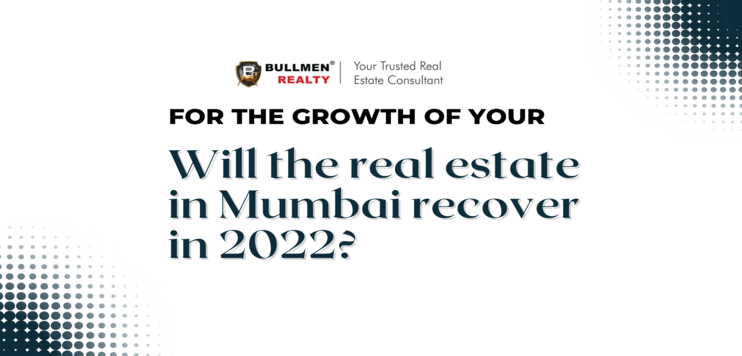
Will the real estate in Mumbai recover in 2022?
The housing market has been reshaped with the invention of the COVID-19 outbreak. There has been a considerable shift in people's attitudes, and there is a rush to buy a residential property in Mumbai real estate, at least in urban areas. India's real estate market is anticipating that 2022 will be the year of recovery after three difficult years. Because Covid–19 is now considered the new normal, 2022 is projected to be less volatile than prior years.
This shifting tendency is thought to be influenced by a number of causes. We witnessed a dramatic wealth erosion across various investment classes, such as gold, equities, and mutual funds, during the first phase of the pandemic. Only real estate was sturdy and durable enough to withstand the hurricane. During the pandemic, many people who leased apartments were treated differently by housing societies, which contributed to the desire to possess a property.
As evidenced by patterns in major cities, a combination of these factors has resulted in increased housing demand. While 2020 was a complete washout due to developers’ and purchasers' lack of understanding of how to cope with the crisis, the residential real estate market found strategies to avoid the catastrophe and pave the way for a new growth path.
Focus on sale
The western markets, which include the Mumbai Metropolitan Region (MMR) and Pune, have had the biggest share of the market in terms of launches and sales during the last three years. The broad economic base of these cities, as well as the presence of numerous prominent and listed developers, as well as Maharashtra's status as the first state to successfully adopt the Real Estate Regulatory Authority (RERA), have boosted buyer trust. Last year, the government's decision to reduce stamp duty aided the return of strong home demand. Even after the benefits were withdrawn seven months ago, the impact of these policy changes may still be apparent in the sustained momentum of housing purchases.
For the period 2019 to 2021, the West zone accounted for 46 percent of launches and 48 percent of sales across India's top seven cities. The developers appear to be cautiously injecting supply in order to maintain a consistent demand-supply equation. The West zone's percentage of launches has decreased from 52 percent in 2019 to 41 percent in 2021. The sales share has climbed from 47 percent to 50 percent within the same period, thanks to government incentives and low prevailing mortgage rates across the country.
Given the strong demand, shifting demographics, and recognition of the necessity to own a hard asset, the residential segment is expected to rise across the country. Prices are projected to climb in a linear fashion as demand rises as the pandemic fades and the economy improves. In the coming years, it is clear that the residential real estate market will expand. The steep V-shaped recovery that we've seen indicates that the upward trend will continue through 2022 and beyond. If interest rates rise, though, there may be a slowdown. Prices are expected to rise in the future, but they will do so in a more sensible manner.
Leave a Reply
Your email address will not be published.




Comments